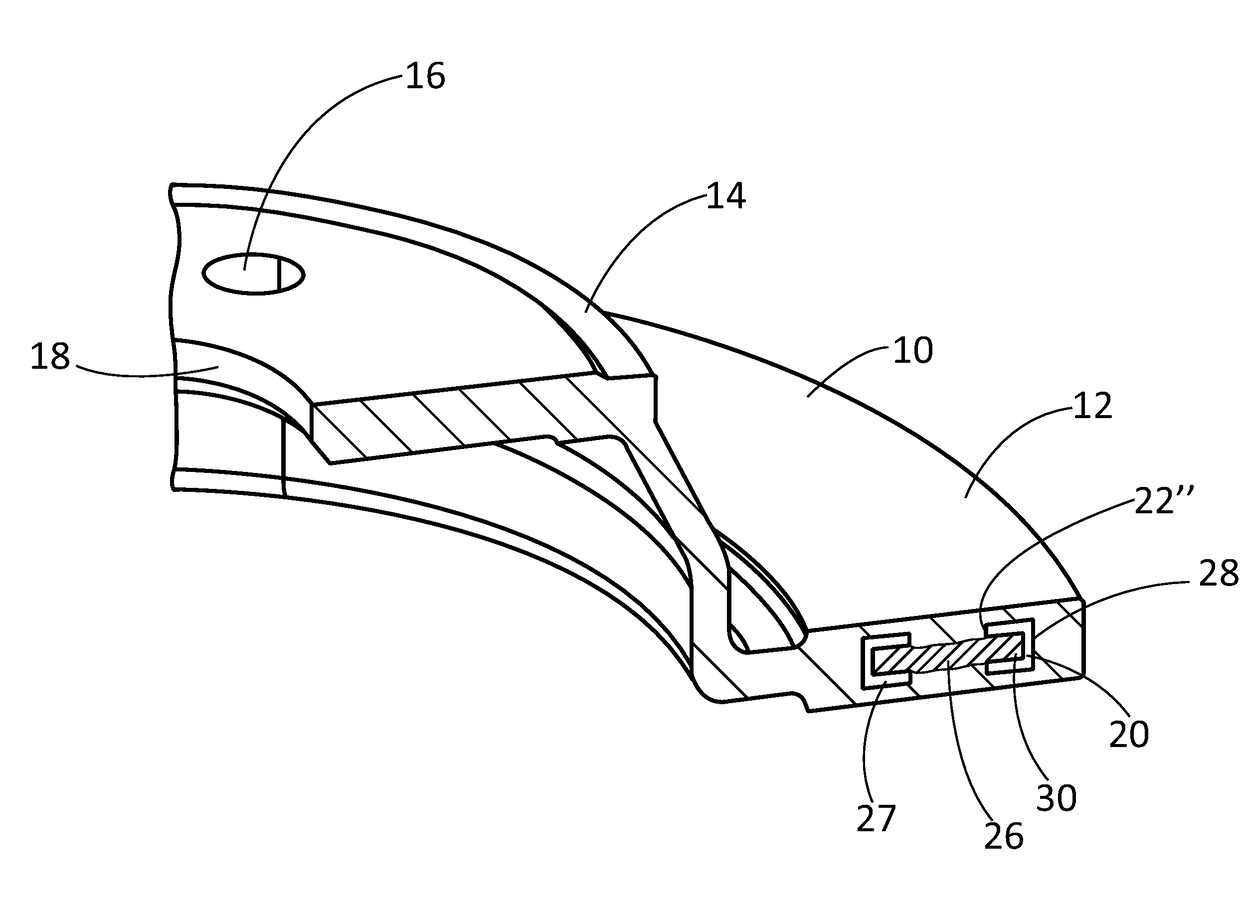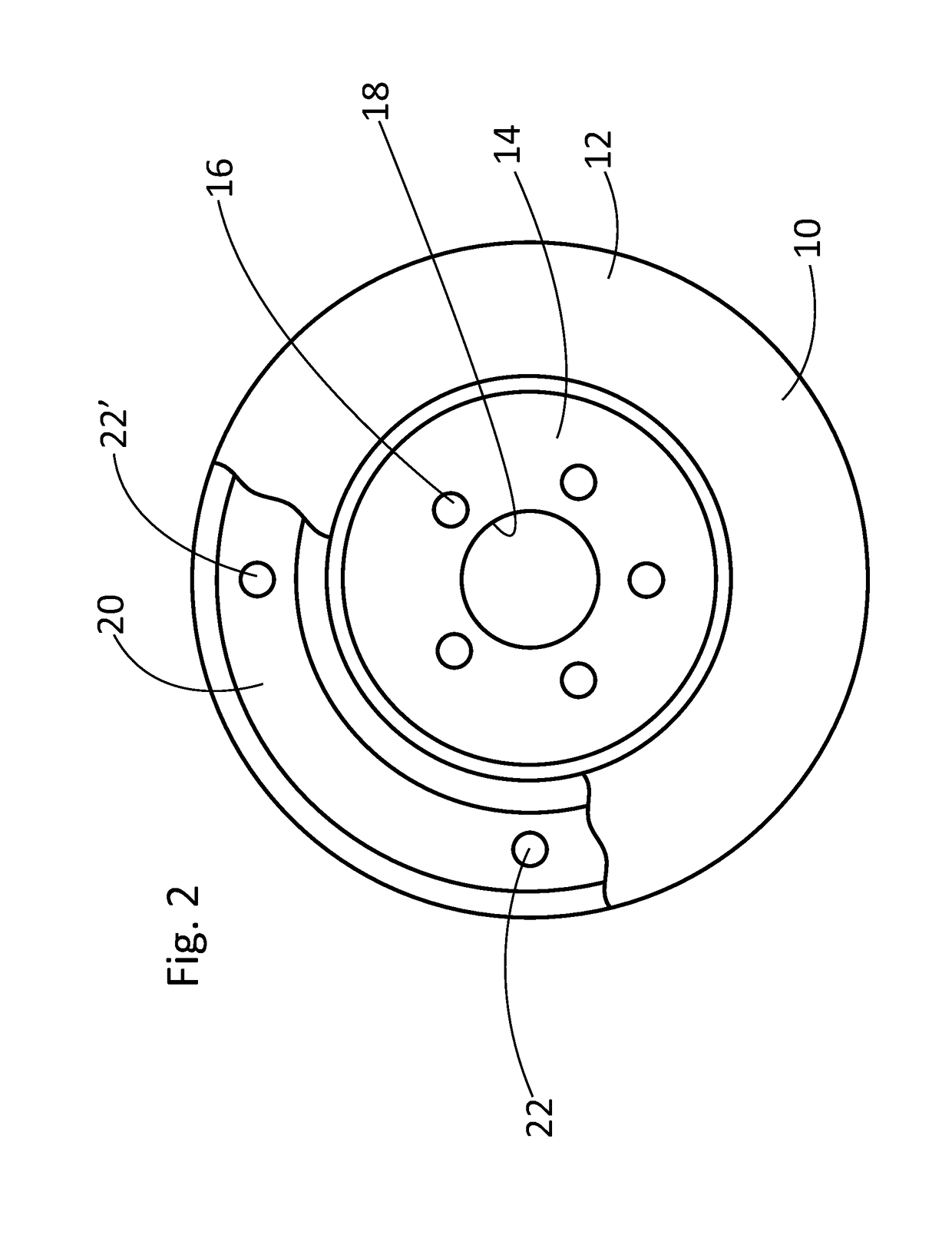Coulomb friction damped components and method for manufacturing same
a technology of friction damped components and friction, which is applied in the direction of rotors, braking discs, stators, etc., can solve the problems of vibration in the vehicle, other parts, such as suspension parts, are subject to vibration during vehicle movement, and other problems, to achieve the effect of reducing the squeal and increasing the damping capacity of the disc brake rotor
- Summary
- Abstract
- Description
- Claims
- Application Information
AI Technical Summary
Benefits of technology
Problems solved by technology
Method used
Image
Examples
Embodiment Construction
[0034]In the following figures, the same reference numerals will be used to refer to the same components. In the following description, various operating parameters and components are described for different constructed embodiments. These specific parameters and components are included as examples and are not meant to be limiting.
[0035]Friction damping has a preferred range of contact force (contact pressure) within which it becomes most effective. Below such an optimum range, excess relative motion at the interface develops without significant energy dissipation. Above it, excess contact pressure limits the development of relative motion for friction to act as an effective damper.
[0036]Contact pressure between two surfaces depends on their contact geometry and elastic properties which are known to change with surface temperature and temperature gradients. The operating temperature range for brake rotors is very wide, ranging from approximately −40° C. (after overnight soaks outside...
PUM
| Property | Measurement | Unit |
|---|---|---|
| temperature | aaaaa | aaaaa |
| coulomb friction | aaaaa | aaaaa |
| area | aaaaa | aaaaa |
Abstract
Description
Claims
Application Information
 Login to View More
Login to View More - R&D
- Intellectual Property
- Life Sciences
- Materials
- Tech Scout
- Unparalleled Data Quality
- Higher Quality Content
- 60% Fewer Hallucinations
Browse by: Latest US Patents, China's latest patents, Technical Efficacy Thesaurus, Application Domain, Technology Topic, Popular Technical Reports.
© 2025 PatSnap. All rights reserved.Legal|Privacy policy|Modern Slavery Act Transparency Statement|Sitemap|About US| Contact US: help@patsnap.com



